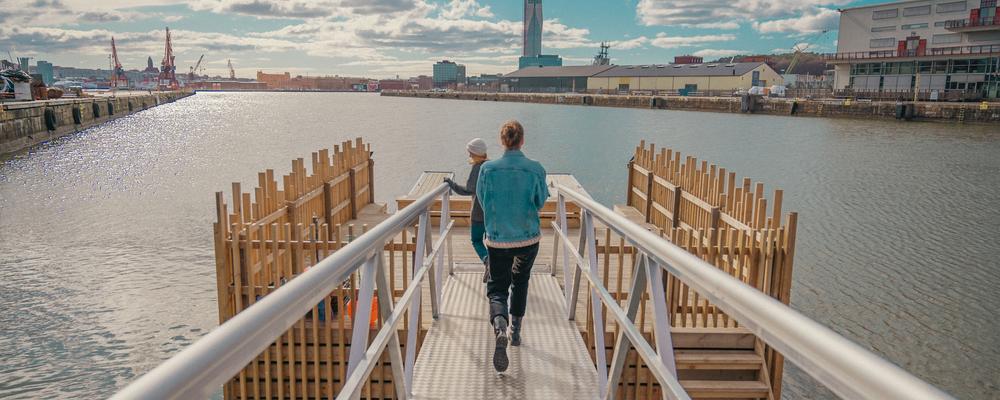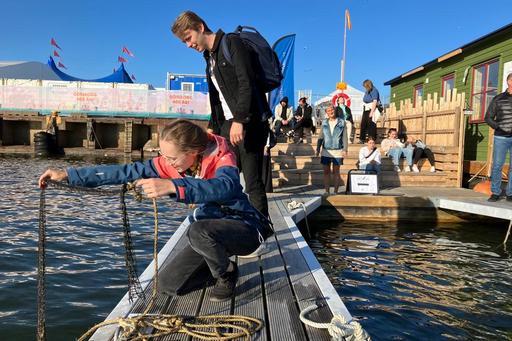
Flytevi - blue community garden in Frihamnen
The blue community garden in Frihamnen is built as a prototype and a meeting place for the seafood of the future. Here visitors can learn more about new food from the sea and small-scale farming.
What is a blue community garden?
A blue community garden is a small-scale farm in the sea. It can be compared to an allotment on land, but instead of carrots and potatoes, it grows mussels and algae.
Can marine organisms be cultivated in Frihamnen?
Yes, indeed it can. Salt water from the sea is heavier than the fresh water in the river and creates conditions for growing mussels and oysters at a depth of a few meters in Frihamnen.
Is it possible to eat what is grown in the blue community garden?
The blue community garden is built as an educational platform to show how farming is done, not to produce food. Therefore, we do not eat what is grown here. During tasting sessions, seafood grown in other places where the water quality is better, is used.

Visit Flytevi
The blue community garden is open to the public on special occasions, such as during the Gothenburg Science Festival, West Coast Sea Week (Västerhavsveckan) and Frihamnsdagarna. If you want to book a study visit for a group, contact Maria Bodin.
About the project
The blue community garden has been built as a prototype for the future and is part of the Prototype Gothenburg exhibition, which was a part of Gothenburg's anniversary celebrations in the summer of 2023. The project is a collaboration between the City of Gothenburg and the Centre for Sea and Society at the University of Gothenburg with funding from Vinnova and Formas.




